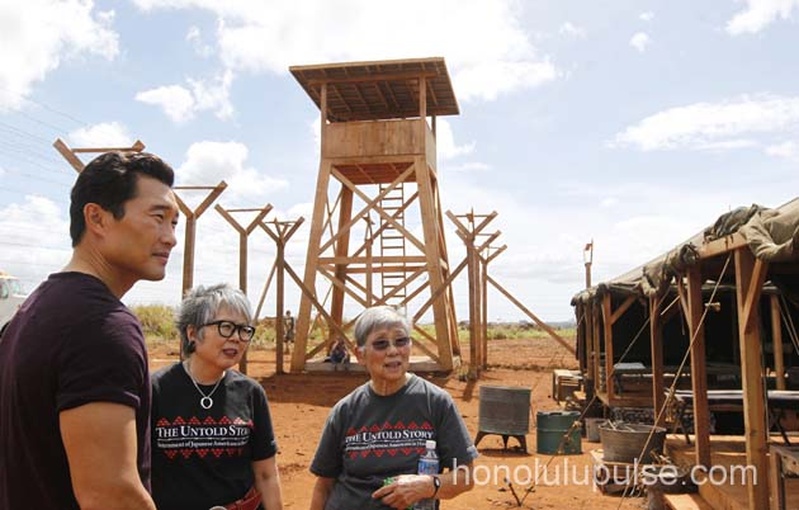The two women were chatting about the internment of Hawaii’s Japanese when the van they were riding in left the paved street for a plantation road. It was an emotional detour neither expected.
Carole Hayashino and Jane Kurahara knew the history of Hawaii’s World War II internment camps, especially the largest one in Honouliuli Gulch. Both women had been to the site of the camp.
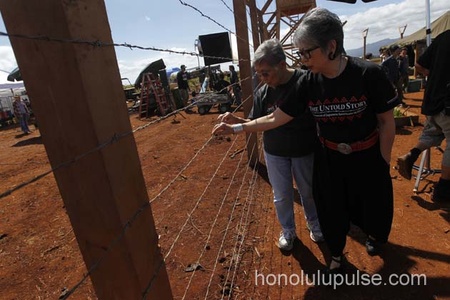
Hayashino, president and executive director of the Japanese Cultural Center of Hawaii, had given tours there. Kurahara, who volunteers at the center, had helped locate the camp at a time when many people feared its location was lost.
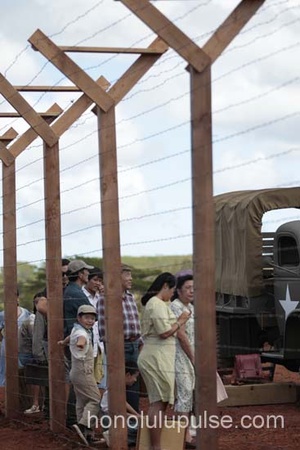
But whenever they pictured the camp, all they could see in their mind’s eye were black-and-white photographs taken during the war. And, of course, the photograph that’s been reproduced most often: a group of men playing mahjong while sitting at a table next to a barbed-wire fence.
On this day, as guests of the CBS TV series “Hawaii Five-0,” Hayashino and Kurahara knew an internment camp was central to the episode being shot. That didn’t prepare them, however, for what they found on the set that was built on land owned by Dole Food Co. in Helemano.
When the lurching van rolled past a sign that read “Honouliuli Internment Camp,” Hayashino abruptly stopped talking. A moment later, when the van came to a stop, she gasped.
“Oh, my God,” the 60-year-old Hayashino said as she wiped away a tear. “I wasn’t expecting that. And it looks so real.”
Black and white was replaced with living color.
A wooden guard tower built using actual military blueprints rose 27 feet above the pair. A machine gun was at the top.
There was a long barbed-wire fence.
There were six Army-issue tents with muddy, wood floors and vehicles that had rolled off assembly lines in the 1940s. There were cots in the tents along with tables, lanterns, suitcases and, in one, a wedding photograph of a woman in a kimono.
There were rifle-toting soldiers dressed in World War II-era uniforms and extras cast as internees.
And a group of men playing mahjong.
“To see this is overwhelming,” said Hayashino, who brought copies of the internment photographs, including the one of the mahjong players.
“It’s one thing to look at photos,” she said. “Then to see it come alive—it’s very emotional.”
The 82-year-old Kurahara, a soft-spoken retired school librarian, nodded in agreement.
“I felt like we were being pushed back into time all of a sudden,” she said.
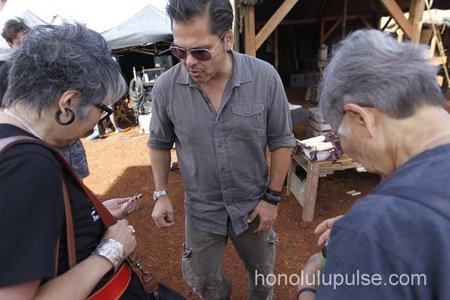
THAT WAS exactly the idea behind the set “Five-0″ created in October.
The internment camp was part of a flashback plot created by Peter Lenkov, the show’s executive producer, and veteran TV writer Ken Solarz.
The episode, “Ho‘onani Makuakane” (“Honor Thy Father”), will air Dec. 13 and includes scenes of the Dec. 7, 1941, attack on Pearl Harbor. The show also went to Ford Island and staged explosions to simulate the attack for another flashback sequence in the episode.
The plot involves an elderly Japanese man who seeks revenge for a murder he witnessed while interned at Honouliuli with his family in 1943. Steve McGarrett’s team winds up investigating the crime as a cold case.
The elderly version of the Japanese man is played by guest star James Saito, who was in the 1976 television movie “Farewell to Manzanar” about the California internment camp. The character is portrayed in flashback scenes by Luke Hagi, the 11-year-old son of Hawaii News Now weather anchor Guy Hagi and former journalist Kim Gennaula.
Lenkov, who was on set to greet Hayashino and Kurahara, wanted to include the internment experience ever since reading about it while researching Hawaii history before writing the series pilot.
“Why not?” he said. “It’s a powerful story. And honestly, it’s a story most people don’t know about.”
The camp at Honouliuli, built on land just west of what is now Kunia Road, was the largest of several camps built in Hawaii during World War II. It housed Japanese, German, and Italian internees from Hawaii as well as prisoners of war shipped to the islands. The declaration of martial law on Dec. 7, 1941, allowed military authorities to immediately imprison Japanese nationals and their children, even those youngsters who were U.S. citizens. By the end of the war, an estimated 1,800 people had been detained or interned.
But giving a history lesson on network television is far from routine, according to Lenkov.
“It’s rare that you can break from formula and tell this kind of story,” he said. “This isn’t something you can do in the first year because you’re establishing the franchise.”
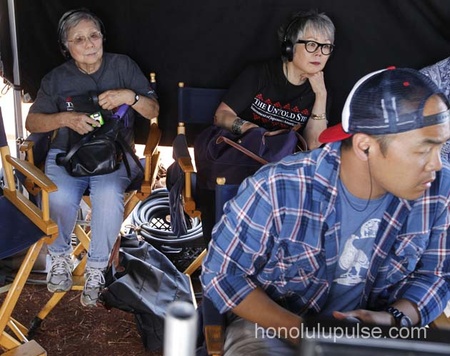
Halfway through the show’s third season, Lenkov was reminded of the internment saga while watching a play produced by “Five-0″ star Daniel Dae Kim, who plays Chin Ho Kelly on the series. The play, “Hold These Truths,” tells the real-life story of Gordon Hirabayashi, a Seattle man who took a stance against World War II internment camps on the mainland.
Lenkov knew it would take “Five-0″ fans beyond the boundaries of the typical crime procedural but felt they were eager for that kind of departure.
“We found that audiences are hungry for different kinds of stories—telling stories outside the box, not the same thing week after week,” he said. “So being able to do this is really a luxury because we’re doing well and the audience is open to it.”
KIM SAID he had a lot of questions when he first heard about the episode.
“At the time I hadn’t read the script so I wasn’t sure, frankly, how well it was going to be done,” he said after arriving on the set for the first time. “I’m really happy to find out how sensitive they were and how well they explored the subject matter.”
As Kim walked the set, and after meeting Hayashino and Kurahara, goose bumps kept rising on his arms.
“It’s a once-in-a-lifetime opportunity,” he said. “I keep getting chicken skin. It’s really moving to me.”
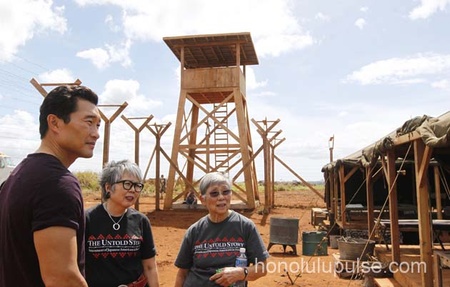
Director Larry Teng, who regularly helms “Five-0″ episodes, was floored when he first read the script. He said it was the most important story in his five years directing TV episodes.
And a huge responsibility as well.
“This show has never fallen short of going after a big spectacle,” Teng said during a break. “But here it’s different. It’s not an explosion. It’s not an action sequence. This is cultural and social history that we’re portraying. And we went to really great lengths to pay attention to details.”
For Hayashino and Kurahara, the details tugged at every emotion the real camp had ever drawn from them. They kept thanking Lenkov, Kim, and Solarz. “Five-0″ had erased all distinction between fact and fiction and they couldn’t get enough of what was before them.
As she stood in the shadow of the guard tower, Kurahara said she was feeling emotions she hoped others felt whenever they visited the real site. She wanted to share it. She wanted to bring them here to this ephemeral setting.
“I know this is fabricated, but it’s coming alive for me,” she said. “The feeling of being incarcerated is strong.”
It took “Five-0″ a week to build the camp, which it then used for a single day. Two days later, all of it was history.
Watch the video: “Five-0” recreates a World War II internment camp >>
* The article was originally published on HonoluluPulse.com, powered by the Honolulu Star-Advertiser, on December 5, 2013.
© 2013 The Honolulu Star-Advertiser; Mike Gordon


